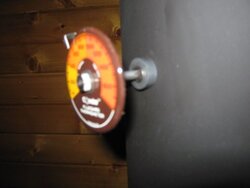firefighterjake
Minister of Fire
I would like to see if there are any differences on double wall pipe in terms of the accuracy since it seems to me that this is where most folks with probe style thermometers would tend to use this vs. going with the simpler and less expensive magnetic style thermometer which could be used on single wall pipe.
My own take . . . I still tend to view my thermometers as only a rough guide . . . and when running my stove tend to keep the temps as close to being in the Goldilocks Zone as possible . . . preferring to keep the temps about halfway in the "just right" zone . . . as I have always figured that the temps could easily be running a bit higher or a bit lower . . . and so far, based on the fact that I have not overfired my stove or chimney . . . and I have not had an excessive amount of creosote I have to say the thermometer is working for me.
That said . . . if a company comes right out and says my product is X degrees accurate . . . when in fact tests show it is not accurate . . . well I have a hard time supporting this product if it is not what it promises and it fails to deliver on that promise . . . and so I continue to follow this thread and Condar's response.
My own take . . . I still tend to view my thermometers as only a rough guide . . . and when running my stove tend to keep the temps as close to being in the Goldilocks Zone as possible . . . preferring to keep the temps about halfway in the "just right" zone . . . as I have always figured that the temps could easily be running a bit higher or a bit lower . . . and so far, based on the fact that I have not overfired my stove or chimney . . . and I have not had an excessive amount of creosote I have to say the thermometer is working for me.
That said . . . if a company comes right out and says my product is X degrees accurate . . . when in fact tests show it is not accurate . . . well I have a hard time supporting this product if it is not what it promises and it fails to deliver on that promise . . . and so I continue to follow this thread and Condar's response.


